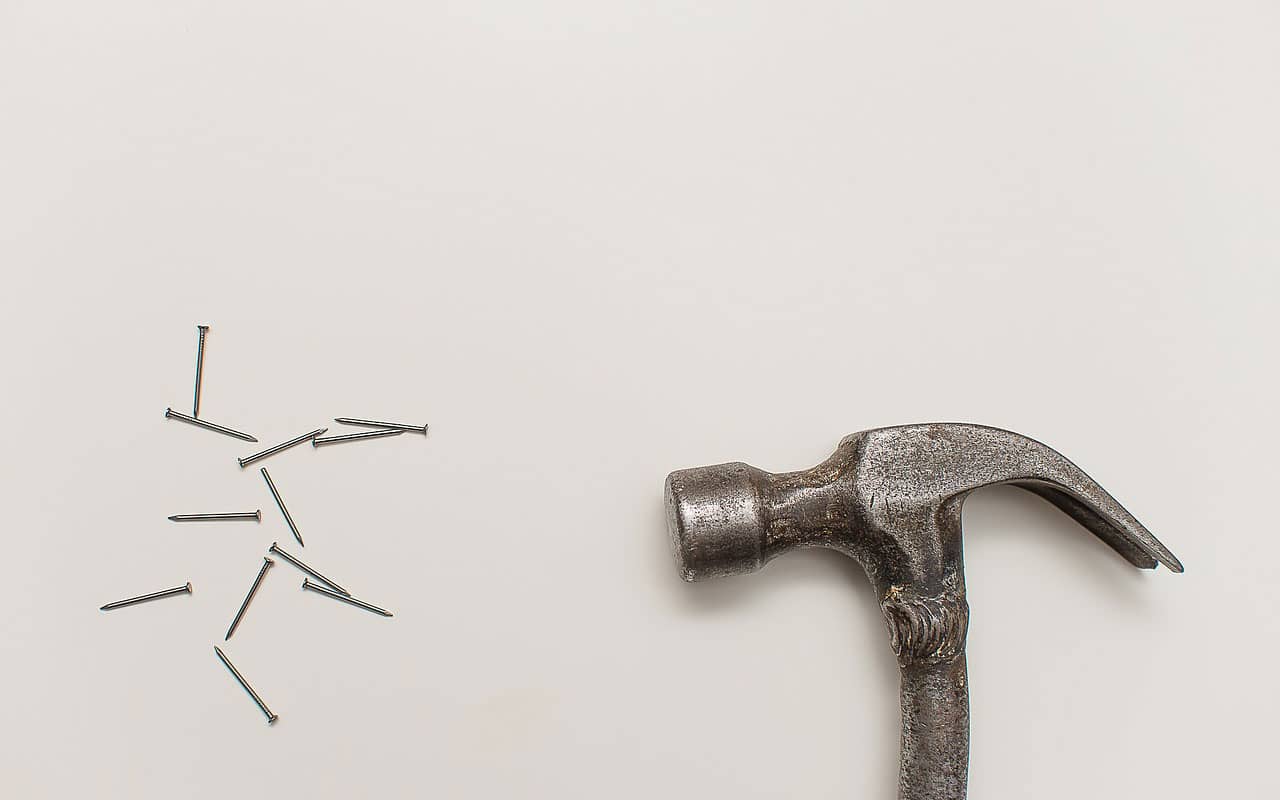Podcast: Download
Subscribe: Apple Podcasts | RSS

You absolutely can do this.
But you’ve got to avoid the charlatans.
Far too many people are shilling “tricks” and “tips” for rewiring your neural pathways that just don’t work.
That’s because they don’t follow a simple rule I’ll share with you today.
Of course, simple doesn’t necessarily mean easy.
And that’s the catch the sharks in the water don’t want you to know.
But I will share with you the pros, the cons and some of the ways that make it possible for you to stretch your brain cells, even if it feels challenging.
Because that’s one of the other secrets that’s usually hidden from you:
Neurogenesis, the growth of new brain cells and neuroplasticity, the changing of the brain?
Both require challenge. You literally do have to stretch yourself.
Repeatedly, making sure that the challenges you take on align with positive habits like mindfulness, games and visualization.
And when you take certain challenges on willingly, there’s no ceiling to how much you can improve the quality of your mind and mental abilities.
Ready for what really works?
Let’s get started!
Rewiring Neural Pathways: Can You Change Your Brain?
It sounds like science fiction.
But countless neuroscientists and other professionals have shown that you literally can change the physical characteristics of your brain simply by thinking in particular ways.
This is the core premise of John Arden’s Rewire Your Brain: Think Your Way To A Better Life.
The title of this book refers to psychologist Donald Hebb’s famous finding that “Neurons that fire together wire together.”
This statement has been validated by scientists countless times and is now known as Hebb’s Law or Hebbian theory.
Sharon Begley has done great work in showing how the ancient sages were right and why meditation literally changes the brain. Train Your Mind, Change Your Brain is a great study that includes research about how to increase neuroplasticity through meditation.
I’ve personally experienced the benefits described by Begley and other researchers like the authors of How Enlightenment Changes Your Brain. I wrote up my experiences in The Victorious Mind and shared them at a TEDx event.
Long story short: Yes, you can change your brain.
Why It’s Possible to Increase Neuroplasticity After Trauma
According to Dr. Tim Dalgleish, it really comes down to intervention.
For example, he and his research teams have studied using memory-based interventions for depression and PTSD.
I didn’t know about these studies until after my own depression improved after using the same method of loci and Memory Palace interventions they used in their studies.
And my student Nic Castle also reported relief from his PTSD. I was so inspired by the survivor story he shared on the Magnetic Memory Method Podcast, I wrote an entire “Memory Detective” novel that is influenced by it. (Nic was a police officer.)
However, it’s important not to confuse the positive activities you’ll discover below with the idea that the brain somehow reorganizes itself following various physical and psychological traumas. These researchers have presented compelling that this is not the case.
So please always remember that in order for the positive change you seek to take place, you need to willingly take action. That way, you’ll not only improve how your brain operates, but also keep it sharp as you age.
Example Of An Intervention That Created Positive Neuroplasticity
After reading Tim Dalgleish’s research, I followed his suggestion and created a simple Memory Palace with 10 positive memories.
These work to “defang” negative memories because when you experience them, you intervene by using the Memory Palace to think of happy memories instead.
I found this technique so useful, I went one step further by choosing a home from my youth that was packed with bad memories.
But instead of filling it with bad memories, I filled by memorizing positive poetry written in Sanskrit.
Since going through this exercise, it’s now possible for me to think about those experiences without re-traumatizing myself. My brain has been “rewired.”
But it did take an intervention.
And that’s the catch if you want to enjoy a rewired brain.
You need some kind of behavioral interruption.
Good news:
I’ve got a bunch of activities that will give you exactly these kinds of positive interruptions, plus another essential ingredient. Just keep reading.
6 Methods to Rewire Your Brain for Memory Improvement
As we go through this list of ways that you can enjoy the benefits of neuroplastic changes to your brain, keep challenge in mind. Also, repetition and focus.
As all of the books and studies I’ve cited above demonstrate, taking on some kind of mental challenge is the key. Variety matters too so you can rotate between activities and stave off getting bored with any single one of them.
I suggest gathering all of your activities in three broader categories:
- Practices that involve mindfulness
- Challenging activities that involve games and learning new skills
- Routines that require visualization
Rotating between activities in these categories is key because, as performance experts like James Clear, have shown, improvement requires a special ingredient.
This ingredient is called time.
Typically, when we want to experience meaningful change that lasts, we need at least 90-days of practice.
Why?
Well, it takes that long for the brain to form new neural pathways. There are also brain chemicals involved, such as myelin. An excellent and highly readable study that condenses all the science is Daniel Coyle’s The Talent Code.
So keep in mind that challenge over time is the special sauce that makes everything I’m about to share with you tick. Without taking on the challenge and giving the challenges the necessarily time to form new neural connections in your brain, it’s unlikely that you will experience the changes you seek.
But use a tool like a simple journal or notebook, and you will succeed and become a whole new version of yourself. Someone with a brain of steel!
One: Neurobics
For most people, the easiest way to get started is a simple set of activities called neurobics.
It’s basically aerobics for your brain.
A simple example is writing with your non-dominant hand. This challenges parts of your brain that you don’t normally use.
Provided you have someone to observe you, you can also practice walking backwards or walking with your eyes closed.
Taking different routes also counts as neurobics. It’s worth taking up these practices to help revivify your brain and form new neuronal connections.
Two: Learn New Skills
We’ve all heard that learning music is great for the brain.
But do you really have to learn new skills that challenging to enjoy neural benefits?
No. You can also build upon abilities you already have.
For example, you probably already know how to bounce a ball and you know how to use a hammer.
But can you bounce a ball on a hammer?
That’s a new skill, a physical game for building your brain, focus and concentration.
Or you can take up fun activities like card magic, and perhaps even learn how to use a memdeck.
Finally, you can build upon your existing math skills and learn to perform mental calculations.
Adding challenges based on your current skills is a great way to stimulate your brain.
Make sure to take time to visualize your journey from beginner to competence with each skill frequently. As these researchers have found, taking a moment to imagine success enhances your performance.
Three: Learn A Language
Many studies show that bilingualism changes the brain in positive ways.
In fact, scientists are actively working on ways to make sure this message reaches the larger public. That’s because language learning creates cognitive reserve.
This special benefit helps protect your brain from diseases like dementia and Alzheimer’s. So if you aren’t already learning a language, please get started soon.
(You’ll need to spend more than 90-days for full fluency, but it will be worth it. And even just 90-days will give you many benefits, especially if you use a language learning Memory Palace.)
Four: Play Challenging Games
Most of us know that playing games provides a certain level of cognitive training.
The trick is to find solid brain games and game-like brain exercises that legitimately challenge you.
Dr. Christine Till is one scientist who has studied some of the apps that claim to provide benefits through gamification. But like me, she’s skeptical.
Crossword puzzles aren’t necessarily the ticket either, as my research into them has shown.
Ultimately, you need to experiment and keep in mind the exact kind of brain rewiring you’re after. Then it will be easier to find games that suit.
Five: Read & Write
Scientists study how reading changes the brain with great gusto.
Although there’s still much to be understood, the reality is that reading transforms the brain in many positive ways.
But it’s not just about reading alone. Writing also helps.
As memory expert Lynne Kelly has shown in books like Memory Craft and The Memory Code, writing has historically been key to the ways we remember.
So I suggest finding a balance between learning how to legitimately read faster and effective note taking.
Six: Use Memory Techniques
My personal favorite method for keeping my neural pathways strong involves using memory techniques.
These are useful when meeting people and remembering their names.
Or you can use them to remember lists using simple rhymes.
I teach ways to use mnemonics much more broadly for what I call “holistic memory improvement.” This is an important approach because many people want to focus only on their working memory. But for better and faster improvements, you want to include memory training in many areas of your life.
That means using memory techniques as part of meditation, diet, goal-setting, positive visualization practices and everything we’ve talked about above related to skills acquisition and language learning.
If you’d like my FREE course on how to get started, just click the image below:
Please just remember that although it’s free, it will challenge you and I do suggest at least 90-days of practice for best results.
And that’s the key takeaway worth repeating.
You see, there are all kinds of things that can negatively rewire your brain and we have no problem doing them repeatedly for very long periods of time. There are also weird ideas floating around, like accepting a brain implant.
Then there are the everyday terrors we put ourselves through. I’m talking about eating horrible foods that cause memory loss instead of memory friendly meals.
So always remember that to make changes, you need to challenge yourself.
And the first challenge is being willing to make the change. Positive changes might not be easy, but they’re definitely the most rewarding.
That’s what this blog is all about, so what do you say?
Are you ready to rewire your brain and live a better life?
Make it happen!
Related Posts
- Memory Games: 22 Diversions That Give Your Brain a Boost
Ever find yourself in the middle of a sentence and unable to find the word…
- Can You Trust Memory Vitamins To Boost Your Brain?
Are memory vitamins the secret to sharper memory? Read the truth about these vitamins, and…
- Ambidextrousness And Memory: Can Dual Handedness Boost Your Brain?
Ambidextrousness and genius are often placed side by side. The question is... does developing dual…










